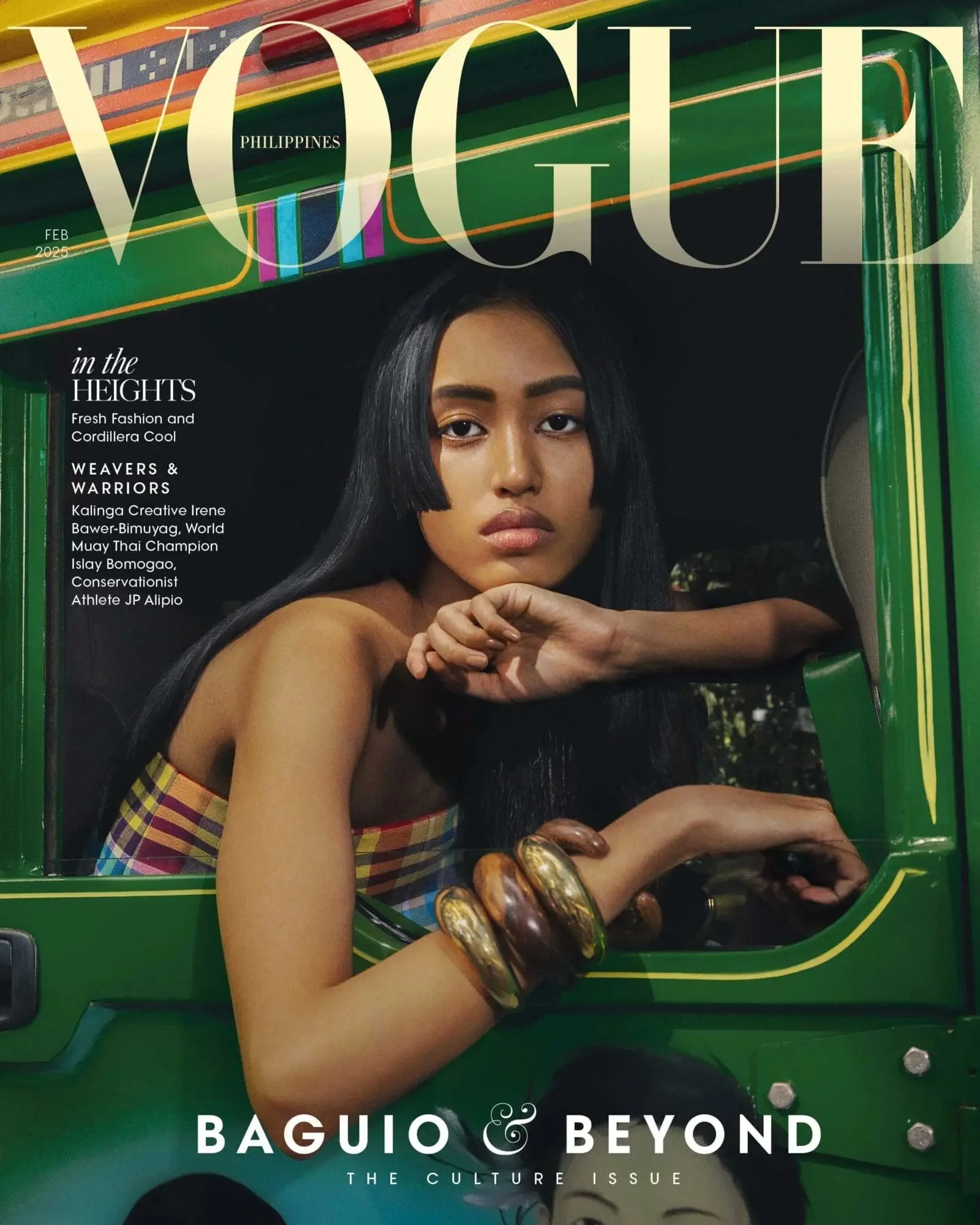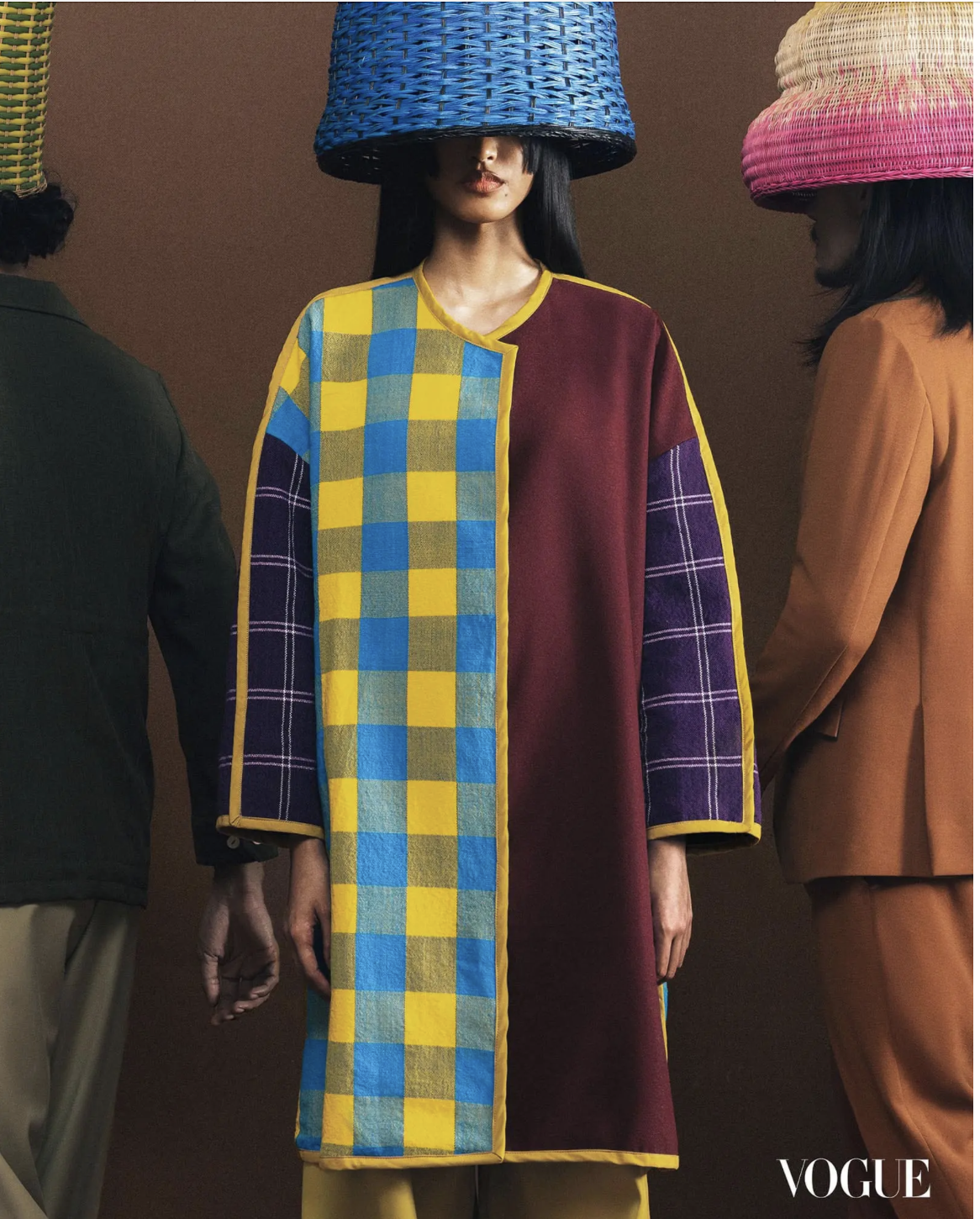Vogue Philippines Takes Us to Baguio and Cordillera Cool, Lensed by Borgy Angeles
/Vogue Philippines Takes Us to Baguio and Cordillera Cool, Lensed by Borgy Angeles AOC Fashion
Vogue Philippines takes us to ‘Baguio and Beyond: Fresh Fashion Framed by Cordillera Cool’, the cover story for its February 2025 issue. Manila-based photographer Borgy Angeles [IG] captures the vibrancy of Baguio — if not its history and America’s role in creating it [literally]. The issue extends a fantabulous embrace of the city’s creativity and deep expression of indigenous Filipino culture.
We meet at the Cordilleras, where “craft, community, and indigenous wisdom reverberate through the land. Models Lake Cabrias, who the team scouted from its Manila casting call, and Fofai, who hails from the Kalinga region, hold handwoven lampshades on their hips and wear Filipino designers’ works inspired by the crafts that come out of these unique, divine-inspired lands.
Here, they prance and dance between vast patches of green land and clear, blue skies, imbibing a vibrancy that is felt in bodies and baskets both. Art and life come together in Baguio and beyond. This is dopamine dressing and living in concert with the artistic glories of nature at her very best. We find ourselves in a visual art gallery totally foreign to the little black dresses of New York City.
America’s Colonial Ties to the Philippines
The American colonization of the Philippines happened through the Treaty of Paris at the close of the Spanish-American War in 1898. Months later, the Philippine-American War broke out in 1899, as Filipino revolutionaries sought genuine autonomy after years of Spanish dominance.
The war, which lasted until 1902, was marked by brutal combat and significant casualties, ultimately resulting in the establishment of American sovereignty over the islands.
Under American rule, the colonial administration implemented significant changes, including the introduction of public education, infrastructure development, and gradual political participation for Filipinos. American colonization fostered economic growth and modernization while simultaneously imposing cultural and political changes not necessarily welcomed by the Filipino peoples.
The Transformation of Baguio
The development of Baguio as a hill station is intertwined with the American colonial administration‘s need of a retreat from the sweltering heat of the lowlands. Early-on after ‘inheriting’ the Philippines from the Spanish colonial power, the Americans turned their attention to Baguio, a region that promised a cool climate and refreshing landscape, reminiscent of their USA homeland.
Governor-General William Howard Taft set in motion plans to establish Baguio as the summer capital of the American colonial government. Architect and urban planner Daniel Burnham was commissioned to draw up a plan for the city, integrating classical city planning with local topography. Burnham's vision included wide roads, circular parks, and government buildings that blended harmoniously with the terrain.
Read more details about America’s history in this vibrant country at link top of post.




